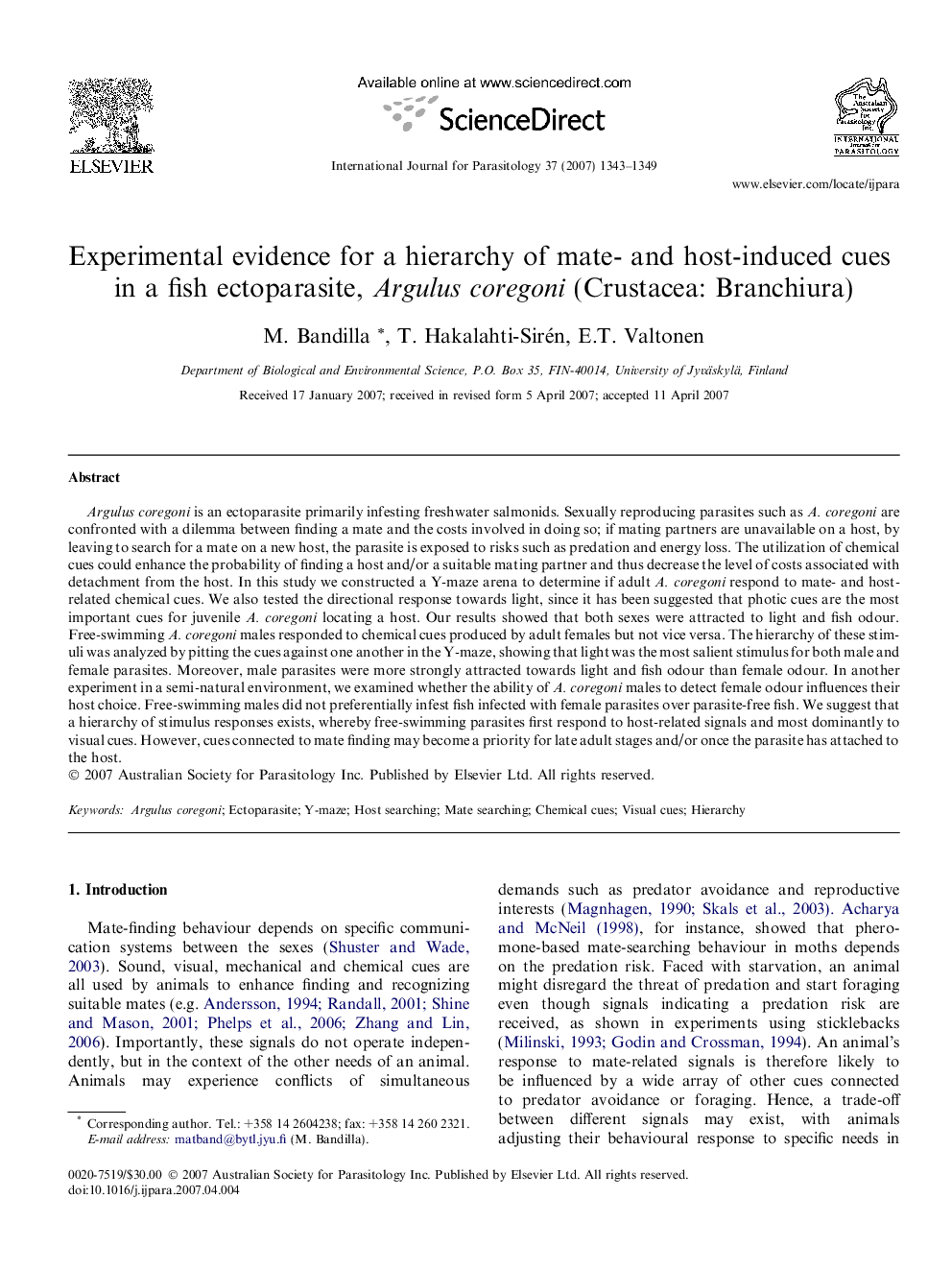| کد مقاله | کد نشریه | سال انتشار | مقاله انگلیسی | نسخه تمام متن |
|---|---|---|---|---|
| 10972762 | 1107313 | 2007 | 7 صفحه PDF | دانلود رایگان |
عنوان انگلیسی مقاله ISI
Experimental evidence for a hierarchy of mate- and host-induced cues in a fish ectoparasite, Argulus coregoni (Crustacea: Branchiura)
دانلود مقاله + سفارش ترجمه
دانلود مقاله ISI انگلیسی
رایگان برای ایرانیان
کلمات کلیدی
موضوعات مرتبط
علوم زیستی و بیوفناوری
ایمنی شناسی و میکروب شناسی
انگل شناسی
پیش نمایش صفحه اول مقاله

چکیده انگلیسی
Argulus coregoni is an ectoparasite primarily infesting freshwater salmonids. Sexually reproducing parasites such as A. coregoni are confronted with a dilemma between finding a mate and the costs involved in doing so; if mating partners are unavailable on a host, by leaving to search for a mate on a new host, the parasite is exposed to risks such as predation and energy loss. The utilization of chemical cues could enhance the probability of finding a host and/or a suitable mating partner and thus decrease the level of costs associated with detachment from the host. In this study we constructed a Y-maze arena to determine if adult A. coregoni respond to mate- and host-related chemical cues. We also tested the directional response towards light, since it has been suggested that photic cues are the most important cues for juvenile A. coregoni locating a host. Our results showed that both sexes were attracted to light and fish odour. Free-swimming A. coregoni males responded to chemical cues produced by adult females but not vice versa. The hierarchy of these stimuli was analyzed by pitting the cues against one another in the Y-maze, showing that light was the most salient stimulus for both male and female parasites. Moreover, male parasites were more strongly attracted towards light and fish odour than female odour. In another experiment in a semi-natural environment, we examined whether the ability of A. coregoni males to detect female odour influences their host choice. Free-swimming males did not preferentially infest fish infected with female parasites over parasite-free fish. We suggest that a hierarchy of stimulus responses exists, whereby free-swimming parasites first respond to host-related signals and most dominantly to visual cues. However, cues connected to mate finding may become a priority for late adult stages and/or once the parasite has attached to the host.
ناشر
Database: Elsevier - ScienceDirect (ساینس دایرکت)
Journal: International Journal for Parasitology - Volume 37, Issue 12, October 2007, Pages 1343-1349
Journal: International Journal for Parasitology - Volume 37, Issue 12, October 2007, Pages 1343-1349
نویسندگان
M. Bandilla, T. Hakalahti-Sirén, E.T. Valtonen,